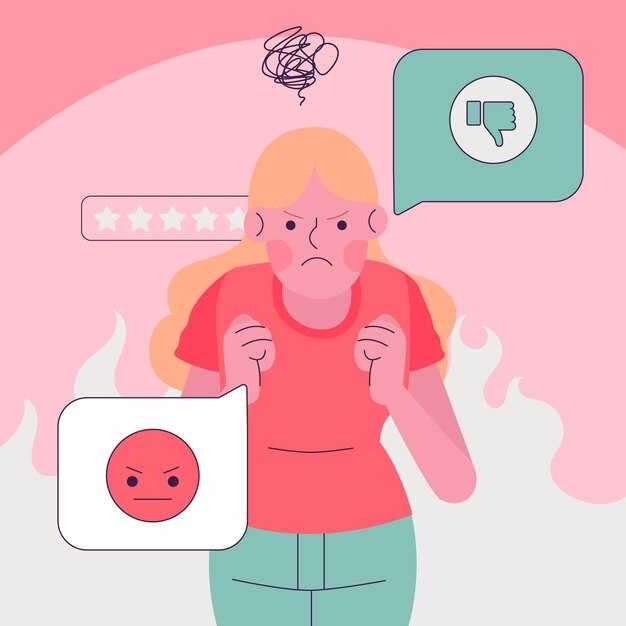So, can someone with narcissistic traits actually change, and is it possible to preserve a relationship when your partner is narcissistic? The short answer to both is yes — but only under one non-negotiable condition: they must first recognize that something is wrong. Change never begins if the person doesn’t believe there is a problem. Admission is step one — whether that’s acknowledging harmful behavior toward you or accepting that the relationship itself is failing. Even an apology means very little unless it is followed by sustained action. Real, lasting change cannot be imposed from the outside; it has to be chosen and cultivated internally. And even when someone genuinely wants to change, desire alone is not enough — they must be willing to invest time, effort and honest work. Intentions are cheap: many people vow to get fit or eat better at the start of a year, but only those who consistently do the work see results. The same applies to emotional growth. Anyone can change in theory, but the real question is whether they will do the difficult inner work of reflection, humility, accepting fallibility, and learning how to repair the damage caused by invalidation, gaslighting, lies or selfishness. One of the most destructive patterns in narcissism is an inability to take responsibility. A narcissistic person typically positions themselves as the injured party because their ego cannot tolerate the shame of admitting fault, and that perpetuates a cycle where the person closest to them — often you — keeps getting hurt.
Narcissistic dynamics are so corrosive because self-centered pride and genuine intimacy cannot coexist. You cannot build safety, mutual respect or emotional closeness with someone who believes they are superior, entitled, or who seeks to control, manipulate or dominate you. You will not feel safe with someone who repeatedly violates boundaries, lies, dismisses your feelings or invalidates you; you cannot feel connected to someone who cannot accept constructive feedback without retaliating. That is not a partnership. If your partner refuses to change these behaviors, the relationship will deteriorate — not for lack of love necessarily, because people can love each other yet still be in a toxic relationship — but because relationships require so much more: reciprocity, consideration, tenderness, empathy, and deliberate acts that make each person feel seen, prioritized and valued. A narcissistic person often has no intention of offering those things, and that pattern damages every kind of bond they have — with children, friends, coworkers and romantic partners — because they fail to recognize how corrosive their behavior is to love.
So again: yes, change is possible, but only if the person first admits there is something to change. Far too often, a narcissistic partner identifies the problem as you — blaming you for their own insecurities, for their unhappiness, and even for their mistreatment of you. Change starts when they finally perceive the real consequences of their actions and are willing to seek help. That’s really how all of us evolve: we stay stuck in patterns until we grasp, or someone shows us, how those patterns harm us. Now, while the narcissistic partner needs to change, it’s important to ask what you need to change as well. It pains me to think you are being disrespected, mistreated, or even abused, and that you may have lost sight of the fact that you deserve far more than the bare minimum. This is the hard truth: the only way to rescue a relationship with a toxic or unsafe partner is to be genuinely willing to walk away. I know that sounds scary — you may want to save the relationship — but being prepared to leave is often the clearest signal that change is necessary. Many people in narcissistic relationships are trapped by trauma bonds and codependency, convinced they can fix or heal the other with their love, or conditioned to think they must earn affection. That belief is wrong: you are worthy of kindness, consideration and being prioritized. If expressing your needs vulnerably only leads to more pain, this relationship is not safe and you should get help.
It’s tempting to cling to the hope that things will revert to “the good days,” but for some, those good days were manufactured by manipulation; for others, the good times were real but not representative of who their partner truly is. Either way, this is the current reality: you cannot force someone into connection or coerce love by setting boundary after boundary. No one is coming to save you — you must save yourself by acknowledging that the relationship is not working for you. Tell yourself you’re willing to do the inner work, but if they won’t, or if your safety is at risk, you need to leave. That is heartbreaking, but compare it to the alternative: staying in an unfulfilling, potentially unsafe relationship where you are dismissed, devalued and not prioritized. Feeling you cannot survive without someone is a hallmark of codependency; leaving may feel impossible, but if they will not change, you either leave now and begin healing, or you wait until the relationship becomes so destructive that you lose yourself completely. Relationships shape our health and well-being: research has shown that being mistreated by a partner — especially when shown contempt — is linked with worse physical health outcomes over time. Our relationships influence our immune systems, mood, anxiety levels and overall happiness, so we cannot pretend how someone treats us is inconsequential.
If you decide it’s safe to try to repair the relationship, everything depends on safety first. If the relationship is unsafe, get out. If it is safe enough to communicate, you must approach the conversation calmly, clearly and assertively. Dramatic emotional outbursts or silent treatment often only reinforce in narcissistic partners that you still care — because those behaviors signal how important the relationship is to you — and that can inadvertently discourage change. Instead, be measured and firm: be ready to actually leave if nothing improves, and tell them that plainly. You don’t have to issue ultimatums or attack them; state the consequence as a boundary: “I cannot continue in this relationship unless we move toward safety, honesty and mutual respect.” Say it respectfully but without wavering. You can frame it compassionately: acknowledge that both of you have contributed to past hurts, commit to no more name-calling, defensiveness or shutting down, and offer that you are willing to take responsibility for your part while asking them to join you in restoring trust and safety. If you’ve already mourned the relationship and are prepared to either move on or rebuild from scratch, that readiness to say goodbye — even while grieving and fearing the future — is the start of healing. Setting clear standards for how you deserve to be treated is not punitive; it is essential. No one should be belittled, demeaned, neglected or abused. If your partner cannot meet you with mutual respect, that is their choice — and choices have consequences.
People can react in many ways to such a stance. Some who would previously have become defensive or shut down may, upon seeing you truly willing to leave, finally engage in honest conversation. Is it fair? No. Do you deserve better than being motivated by the threat of loss? Absolutely. But by calmly asserting your boundaries you show you understand your own value and will not tolerate toxic patterns — that can be the catalyst for genuine change. I am not instructing you to automatically give the person a second chance; that decision is yours. The crucial point is that you have chosen to move toward health, with or without them.
If they do respond and you begin to have honest, vulnerable conversations again, take practical steps to rebuild: start with individual therapy for yourself, and consider couples’ resources together. Read relationship books as a team — works from John and Julie Gottman, Esther Perel, Sue Johnson, or Julie Manano are good places to start — and use that language to recognize what healthy connection looks like. Some fear a partner will weaponize this information, but learning what mutual respect and validation sound like helps you identify demeaning language or gaslighting and refuse to tolerate it. Don’t put yourself under a dominant partner’s thumb; a healthy relationship allows no place for dominance.
Agree together to remove toxic behaviors — no more yelling, name-calling, contempt, selfishness, criticism, stonewalling or silent treatment — and intentionally add positive practices: regular weekly check-ins to acknowledge what’s going well and what needs work, nightly conversations to reconnect, learning each other’s love language and planning ways to show consideration. Speak to one another with kindness and respect as the new baseline. If your partner won’t participate, you won’t feel close, safe, or valued — and staying in that state is a choice only you can make. Closeness cannot coexist with neglect or complacency.
Also, stop using “narcissist” as a label you wield as a substitute for action. That label may feel validating when you’re in pain — and your pain is real: you have been hurt, ignored, manipulated, perhaps emotionally or physically harmed — but naming them alone does not prompt change and can keep you stuck in a victim stance where all the power remains with them. Yes, your partner carries much influence over how you feel, but connection requires two people doing the work. Instead of focusing solely on whether they meet every clinical criterion for narcissism, ask yourself practical questions: Do I feel consistently prioritized? Do I feel safe? Do they care about my needs and feelings? Or am I regularly dismissed, invalidated or ignored? If the answer is the latter, the relationship is unhealthy regardless of labels.
That doesn’t mean you are to blame for being mistreated. No one causes another person to abuse or manipulate them, but it is mature and empowering to reflect on what you can change: Do I silence myself too often? Do I tolerate being treated poorly because I gave too many chances after empty apologies? Am I ready to assert my needs, to set firmer boundaries, and to address my own patterns that may keep me stuck? Growth sometimes requires admitting uncomfortable truths about ourselves — for instance, that we accepted treatment we didn’t deserve because we didn’t yet believe we were worthy of better. Healing involves owning your role where appropriate, learning healthier conflict patterns, and asking whether both partners are willing to pursue maturity, emotional safety, and repair.
A relationship can be saved even if one partner shows narcissistic tendencies, but only if both people commit to emotional growth, accountability and rebuilding safety. Someone who is truly narcissistic in the clinical sense may be unwilling to do that work, but many people who are self-centered, defensive, or avoidance-prone do have the capacity to change once they genuinely desire healthier connection rather than using vulnerability as a weapon. If you are a person who recognizes the harm you’ve caused and want to change without manipulating your partner later, you are not beyond hope; protection mechanisms can still hurt others, but therapy and honest work can help you learn new ways of relating. Change is possible if you want it more than you fear it. Often the fear of intimacy stems from not having healthy role models: you learned that vulnerability equals pain, so you avoid closeness, preemptively withdraw or act self-protectively. That pattern makes sense given a painful past, but it can be examined, understood, validated and transformed. Admitting you didn’t receive the connection, safety and unconditional care you deserved as a child is painful but powerful. Acknowledge that your current relational habits aren’t working, and be brave enough to try a different approach. Healing takes effort, but it is achievable, and you are capable of it.


 Can a Narcissist Change?">
Can a Narcissist Change?">

 Childhood Neglect Makes You "Play Small" in Relationships (4-video compilation)">
Childhood Neglect Makes You "Play Small" in Relationships (4-video compilation)">
 The EASIEST way to FIX your FIGHTS in your Relationship">
The EASIEST way to FIX your FIGHTS in your Relationship">
 This is why Relationships Fail.">
This is why Relationships Fail.">
 This Is How Avoidants Test You (It’s Not Rejection, It’s Fear)">
This Is How Avoidants Test You (It’s Not Rejection, It’s Fear)">
 We all need a Conflict Director (Funny)">
We all need a Conflict Director (Funny)">
 Toxic Red Flags in your Relationship">
Toxic Red Flags in your Relationship">
 When You’re the Strong One But Secretly Falling Apart">
When You’re the Strong One But Secretly Falling Apart">
 Can their EGO handle a COMPLAINT?">
Can their EGO handle a COMPLAINT?">
 3 Childhood Trauma Traps That Make You Attach Too Fast">
3 Childhood Trauma Traps That Make You Attach Too Fast">
 We Stopped Fighting after Realizing THIS">
We Stopped Fighting after Realizing THIS">